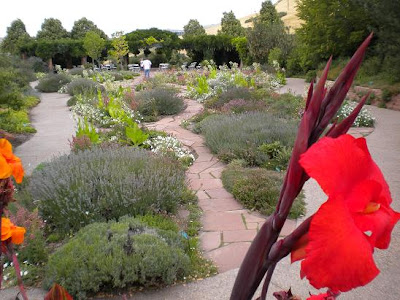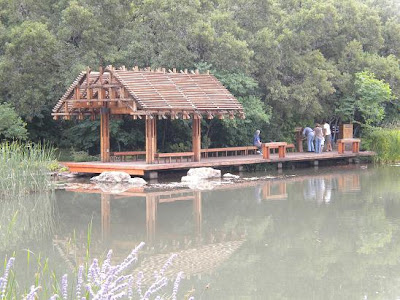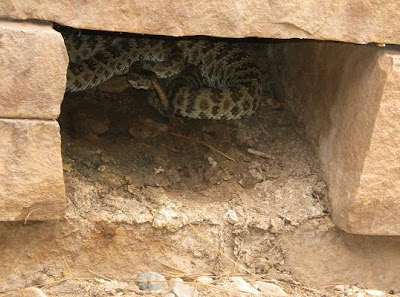Who knew? I could not believe that its been a month now since I started a chronicle (in short, blog) of our 'little grand' project. And hopefully (knowing myself), I will be able to sustain this blogging project until the very end, when our 'little grand' project is finally a working, breathing entity.
Since we have a long, long, loonnngggg way to go before the project is completed, let's get back to business. Unfortunately though, I don't have much information to update you with for now.
Once again, I called home to get the latest update and I was told the process of erecting the fence on one side of the farm is moving along nicely but its not even halfway. Finally all the chain links have also been delivered. So apart from acts of men or acts of nature, there should be no reason to stop or even slow down.
That's it. Told you there's not much to update you with. But...
My quest to find garden design ideas prompted me to visit one of the garden attractions here in Salt Lake City. It is called the Red Butte Garden and Arboretum. And I would say it was a fun, interesting and enjoyable experience as I strolled around this sprawling and beautiful city garden. Aside from that, I was also able to get some pretty cool ideas I could certainly use in our own garden.


Wisteria arbor

Modern water features that separate the Herb, Medicinal and Fragrance gardens


Herb (top) Fragrance (bottom) gardens

Entrance of Children's garden




Views inside Children's garden



Waterfalls (top), Koi fishes (middle) and Water Pavilion at the creekside




Other cool water features and foot bridges



Decks and garden patios
If you noticed that there are no close-up pictures of plants and flowers, you are right, there is none. It's because I am more interested with the structures and design concepts. But it doesn't mean I didn't take any, maybe they'll appear on some other posts.
I'm pretty sure though that the designers of this garden did not include this particular creature as an added attraction. Snake!!!!

While we were leisurely strolling and taking pictures, one of our companions suddenly shrieked in fear. There was a rattlesnake slithering its way across our path. And we knew it was visibly irritated because it was vigorously rattling its tail as if saying 'get out of my way!'
I took a snap of it after it found an empty crevice where it thought it can safely hide. Although we ran into a sign that says there may be snakes on the premises, we never thought we would encounter one. Now that's the icing on the cake to our stroll in the garden.









